Epic Guide to Iceland’s Diamond Circle
Ultimate Guide to the Diamond Circle in Iceland
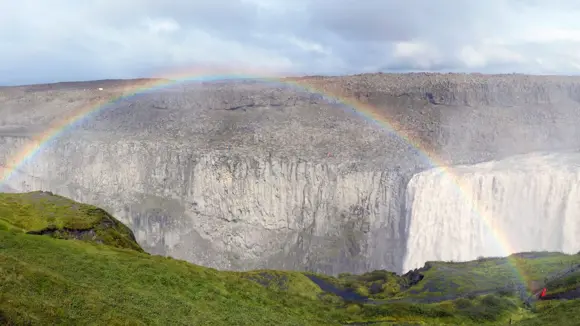
Iceland’s Diamond Circle is an impressive circuit covering some of the most spectacular attractions such as Húsavík in the northern part of the island. This 250-kilometre rhombus-shaped circuit is one of the most popular sightseeing routes in Iceland. Whether you’re seeking an spic adventure on your next Icelandic trip or have only just discovered it, our guide tells you everything there is to know about the Diamond Circle in Iceland.
Diamond Circle: Key Stats
Before you hit the road, these are some Diamond Circle stats you should be aware of:
-
Distance: 250 kilometres (155 miles)
-
Travel Time: 1 - 3 days
-
Best Time to Travel: June to August
-
Top Things to Do: Hiking and whale-watching
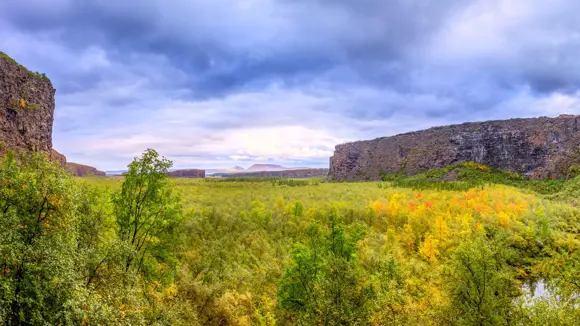
Key Sights Along the Diamond Circle Route
On par with Iceland’s most popular sightseeing route, the Golden Circle, the sheer beauty, drama, and character of Iceland’s Diamond Circle attractions will leave you spellbound. You could always stretch your self-drive itinerary to make a few detours, but these key attractions simply cannot be missed: the historic Goðafoss, the otherworldly Lake Mývatn, Europe’s most powerful waterfall - Dettifoss, the crescent-shaped Ásbyrgi canyon, and the whale-watching capital of Iceland - Húsavík.
Goðafoss
Visit the historic site where the last official totems of Norse mythology were disposed of by the leader of Iceland’s Parliament following its conversion to Christianity in 1000. The “Waterfall of the Gods” is a mighty cascade that won’t disappoint.
Lake Mývatn
Explore otherworldly landscapes in Lake Mývatn featuring pseudocraters, lava pillars, lava fields, and hot springs. Iceland’s fourth-largest lake supports a rich ecosystem of aquatic plants, marsh birds, and the greatest variety of ducks anywhere in the world. Fosshotel Mývatn is only a stone’s throw from this unique natural environment.
Lake Mývatn is a key focal point on the Diamond Circle, and for good reason: it's located near lots of key attractions in North Iceland so you can make the most of your trip here.
Námaskarð Geothermal Area
One of the best sites to observe Iceland’s geothermal activity is the Námaskarð Pass whose colourful sands and rocky craters have been likened to the terrain on Mars. Watch as steam bursts forth from vents in the earth and mud bubbles in pools. Keep to the wooden walkways and don’t venture off the path as the hissing action can quickly turn sour.
Dimmuborgir Lava Field
For those seeking a dive into Icelandic mythology, Dimmuborgir is a must-visit. Roughly translating to ‘dark fortress’, Dimmuborgir is believed to have been the place where Satan landed and created the catacombs of Hell. Game of Thrones is another reason for checking out this site where the series was filmed.
Mývatn Nature Baths
A relaxing dip in the Mývatn Nature Baths is a great way to end your Diamond Circle itinerary in the Lake Mývatn region. At par with the popular Blue Lagoon near Reykjavík, the Mývatn Baths are more laid back and offer a quieter experience for fewer pennies, be it under the Midnight Sun or the Northern Lights!
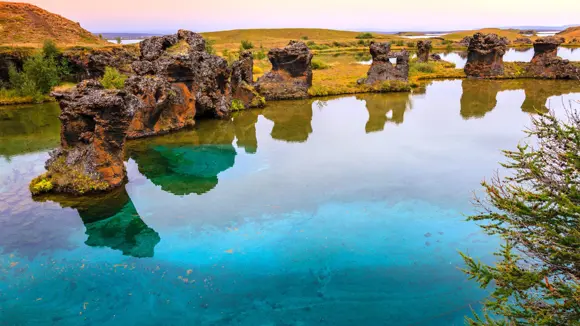
Ásbyrgi Canyon
One of the prime attractions along Iceland’s Diamond Circle is this horse-shoe-shaped canyon in Öxarfjörður. Hiking at Ásbyrgi is a chance to explore the enormous cliff faces reaching up to 100 metres in height. The towering cliffs and sizable rock “island" shield the lush green plant life from harsh weather conditions.
Dettifoss
Europe’s most powerful waterfall is impactful even before you’ve set your eyes on it: you can hear the cascading water crash down to a staggering fall of 45 metres (148 feet). Follow the main pathway to the viewpoint and watch the mist rising from this mighty waterfall engulf its surroundings.
Húsavík
Nestled in the Skjálfandi Bay (“The Whale Capital of Iceland”), Húsavík is a celebration of Iceland’s maritime heritage. This fishing town is also linked with the Eurovision Song Contest, a connection which you can explore on the Fire and Saga tour. Fosshotel Húsavík offers comfortable lodgings as you explore the best of this Diamond Circle region.
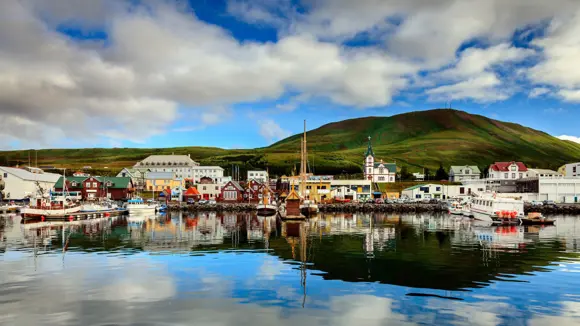
How to Get to the Diamond Circle?
Iceland’s Diamond Circle is about 30 kilometres (18 miles) from Akureyri. How you get there depends on what your starting point is. If you’re coming from Egilsstaðir in East Iceland, you will have to drive anti-clockwise around the Ring Road. From Reykjavík, you can travel either clockwise (6.5 hours of driving), or anti-clockwise (10.5 hours).
Driving the Diamond Circle Iceland: What You Need to Know
A self-drive road trip is the best way to explore the Diamond Circle in Iceland. Of course, you’ll have to rent a car, plan your route, and secure accommodation, but once you’re on the road, you have the freedom to go at your own pace.
You can drive the entire Diamond Circle circuit in just four hours! Whether you want to pack in as much sightseeing as you can in a day or take your time with attraction is all up to you. Just bear in mind that days are relatively shorter (if you’re visiting in the winter), so you don’t want to cram too many sights all at once.
Fantastic Detours Along the Diamond Circle Route
Iceland’s Diamond Circle is a satisfying trip in itself, but if you’ve got the time, there’s no harm in squeezing in a few detours along the way. With breathtaking sights in every corner of Iceland, any detour you make on your Diamond Circle drive will be more than worth your time.
Æðafossar
Located on one of the popular rivers in Iceland for brown trout fishing - Laxá River - Aedafossar or the “Eider Falls” is an easy detour along the Diamond Circle. Only 6 miles from Húsavík, this amazing waterfall is split into two and overlooks the Skjálfandi bay.
Hljóðaklettar
Drive 9 miles south of Ásbyrgi on a paved road to get to the columnar rocks cluster known as Hljóðaklettar. These strange, diagonally angled rocks mark the entrance to the Vesturdalur valley. Hljóðaklettar is an embodiment of how unique Iceland’s nature is so you should definitely check it out if you’ve got time. There’s even a guided tour if you’re interested, but just bear in mind that the attraction is closed in the winter.
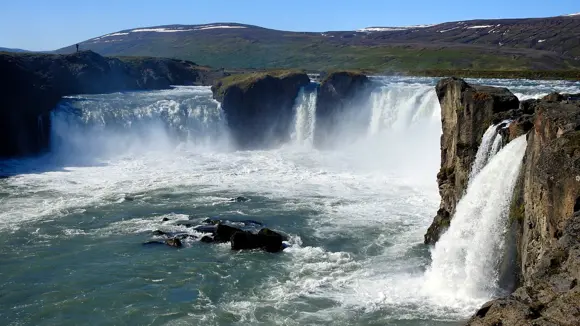
The 250-kilometre route that is the Diamond Circle captures the geological power of Iceland. With boiling geothermal pools, crater lakes, and solidified lava strongholds, it’s impossible not to feel the force of the geological movement underneath. Whether you’re planning a future trip or heading out on one soon, Diamond Circle Iceland is an epic adventure waiting to unfold.